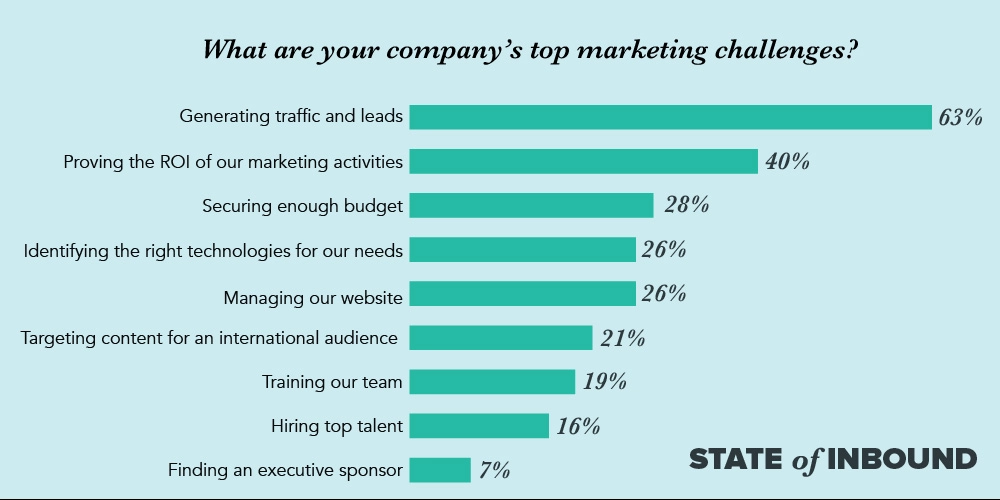
Introduction
Often under-utilized, intent data is ripe with possibilities, especially when it comes to raising your business’ marketing ROI. But it has to be approached with a balanced strategy in order to take full advantage. In a typical scenario, marketing and sales teams in business organisations are able to understand first party intent data but when it comes to third party data, they are unable to tap into key insights. It’s important to remember that information gained from direct visitors to your website is as important as those from other channels. Combining both first and third party intent data for a well-informed marketing strategy is one of the biggest learnings for B2B marketing 2019.
What is Intent Data?
Intent data in its essence, is specific information related to an individual or a buyer’s online preferences and behaviours, even before they have any interaction with your business. Intent is demonstrated via activities such as clicking your ad, filling out a form confirming interest in the brand, browsing your website or reading an article published by your organisation.

Source: lattice-engines
Understanding patterns in this type of behaviour can allow you to customize content based on the primary target audience, and increase the success rate of your sales and marketing tactics considerably. Now, the question always comes up — how to use intent data? To begin with, you can utilise intent data productively to promote engagement with your brand, track trends among clients, find new active prospects and boost one on one interactions with customer accounts.
Harnessing the Power of Intent Data Insights
Tuning in to what the buyer really wants and driving content strategy accordingly can have a huge impact on marketing and sales overall. In order to have a robust collection of intent data that spans diverse clientele, the marketing team must ensure that information gathered includes multiple geographies, demographics and professional backgrounds.

Source: HubSpot
Unless these details are sufficiently correlated during market research, it would be difficult to grasp the extent of customer behaviours and how they match with certain profiles or buyer personas. Once this initial step is taken care of, here are some strategic ways in which intent data can be used to support highly relevant and helpful content for better customer engagement:
- Tailor the Online Experience for Potential Customers
Not only must marketing and sales techniques cater to active members of the customer base, it should also account for “anonymous” visitors or those that have not had any prior interaction with your business. There are tools to track which location the visitor is based in or the kind of industry they are affiliated with, thanks to their IP address and browser cookies. Once you tag such visitors and the specific pages they spending time on, you can use product customization applications online to further customize the content they view. Typically, in this scenario, visitors are requested to fill up a form so they can receive more information about the brand and marketing and sales can follow up further.
- Categorize New Leads Depending on Engagement
As marketing automation software becomes increasingly popular, there are many business organisations capitalising on the advantages of first party intent data, to raise the accuracy of their leads. One way to do this in a consistent manner is by following a strong lead scoring model, whereby a visitor is scored based on the type of activities they do, in turn, indicating whether or not they are ready to buy.
For instance, if they click on the services page, they get five points added to their total or download your company overview PDF. Then, if they head to the costs and plans webpage, they will receive ten more points, because this indicates more interest in purchasing. Once the score of one of your prospects reaches a certain threshold, the marketing and sales division contact receives an alert.
- Implement a Customized Marketing Strategy
The segmentation of target audiences sometimes takes place with limited information regarding their contextual data. Take for example, the fact that job titles of inbound leads are not consistent in their labelling, which results in confusion regarding the exact functions they perform in their role or how senior they are. Due to this inaccuracy, clients might be receiving irrelevant promotional mailers. It is absolutely essential that a sales and marketing team blends information collected from both first party and third party intent data in a thoughtful way, such that contact lists include not only their role titles, but also their areas of interest for exploring future conversion potential.
- Plan ahead to Better Spot Potential Clients
Prospective customers are constantly being influenced by their environment and choices, long before they connect with your website or hear about your company. For instance, individuals with Instagram accounts track profiles such as Condé Nast for recommendations on the best accessories for travel. This type of activity would fall under 3rd party intent data.
3rd party behavioural data can be overwhelming to navigate due to its sheer volume and complexity. This is partly the reason why there aren’t many businesses that want to invest sufficient resources in mining this data as an add-on to their existing marketing and sales approach. A more cost-effective alternative to tracking this type of information is via predictive analytics applications that will complement your existing CRM platforms. Such tools can screen irrelevant topics and narrow down on the ones that are particularly relevant for your unique criteria.
A hassle-free method to reap the benefits of quality intent data is to create original written communications such as blogs, articles, statements and briefs that offer audiences a better understanding of who your target audience is. The content should tackle key issues in the industry, and the challenges of working with the product or service offerings your company is involved with. This presents your brand as a credible authority on market intricacies and allows customers to feel like they have a deeper understanding of the company’s motivations, instead of being a faceless label in a sea of others.
At its core, intent data propels you to create genuine content that is well-aligned with prospect intent as much as possible. This can have a ripple effect provided you focus on expanding outreach via multiple platforms and spread the content among intended audiences.
The Way Forward
A lead generation plan is incomplete without leveraging intent data in a thoughtful and strategic way, when it comes to accelerating the impact of marketing and sales overall. Knowing how to extract vital information from such data can make your brand stand out from similar alternatives in the industry, and eventually give you the competitive edge you have been searching for all this time.
With new insights, you can drastically enhance the effectiveness of several elements in your business strategy, ranging from the type of content marketing, delivering tailored marketing messages, customisation of branding to prioritising leads based on activities, i.e. lead scoring models. Each of your campaigns will be more likely to capture the minds of your prospective customers and eventually result in higher profits for the company, leading to a bright future ahead.
Our blog
Latest blog posts
Tool and strategies modern teams need to help their companies grow.

Running a business comes with its own set of challenges, especially when it comes to ...

AI is surely a futuristic concept but it evolves today, particularly in sales and mar...

A successful webinar requires more than just a great speaker and a compelling topic. ...







